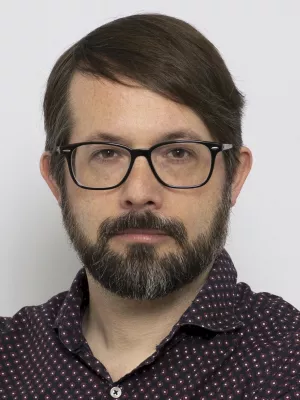
Frans-Jan Parmentier
Associate professor

Calculations of automatic chamber flux measurements of methane and carbon dioxide using short time series of concentrations
Author
Summary, in English
The closed chamber technique is widely used to measure the exchange of methane (CH4) and carbon dioxide (CO2) from terrestrial ecosystems. There is, however, large uncertainty about which model should be used to calculate the gas flux from the measured gas concentrations. Due to experimental uncertainties the simple linear regression model (first-order polynomial) is often applied, even though theoretical considerations of the technique suggest the application of other, curvilinear models. High-resolution automatic chamber systems which sample gas concentrations several hundred times per flux measurement make it possible to resolve the curvilinear behavior and study the information imposed by the natural variability of the temporal concentration changes. We used more than 50000 such flux measurements of CH4and CO2from five field sites located in peat-forming wetlands ranging from 56 to 78 N to quantify the typical differences between flux estimates of different models. In addition, we aimed to assess the curvilinearity of the concentration time series and test the general applicability of curvilinear models. Despite significant episodic differences between the calculated flux estimates, the overall differences are generally found to be smaller than the local flux variability on the plot scale. The curvilinear behavior of the gas concentrations within the chamber is strongly influenced by wind-driven chamber leakage, and less so by changing gas concentration gradients in the soil during chamber closure. Such physical processes affect both gas species equally, which makes it possible to isolate biochemical processes affecting the gases differently, such as photosynthesis limitation by chamber headspace CO2concentrations under high levels of incoming solar radiation. We assess the possibility to exploit this effect for a partitioning of the net CO2flux into photosynthesis and ecosystem respiration as an example of how high-resolution automatic chamber measurements could be used for purposes beyond the estimation of the net gas flux. This shows that while linear and curvilinear calculation schemes can provide similar net fluxes, only curvilinear models open additional possibilities for high-resolution automatic chamber measurements.
Department/s
- Dept of Physical Geography and Ecosystem Science
- MERGE: ModElling the Regional and Global Earth system
- BECC: Biodiversity and Ecosystem services in a Changing Climate
Publishing year
2016-02-18
Language
English
Pages
903-912
Publication/Series
Biogeosciences
Volume
13
Issue
4
Document type
Journal article
Publisher
Copernicus GmbH
Topic
- Geosciences, Multidisciplinary
Status
Published
ISBN/ISSN/Other
- ISSN: 1726-4170

